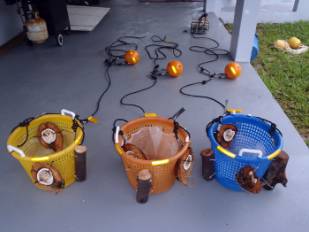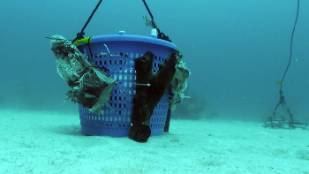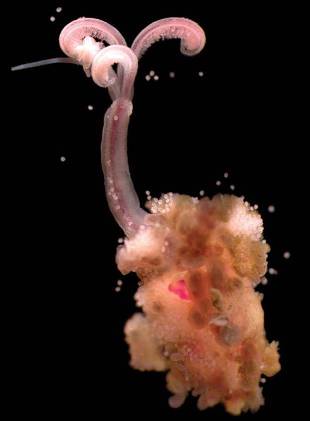One of the objectives of our field trip to the Bahamas is to see if a species of the bone-eating worm, Osedax, can be found there, which would be a first for science. However, if we're to find Osedax worms in tropical waters we need to lure them to us.
We know that these bizarre creatures bore into the bones of dead whales that have fallen to the seafloor. Finding a whale skeleton naturally in the waters in the Caribbean could take weeks or months and although a stay that long sounds like an attractive prospect it wouldn't be the most economical. Instead, the team thought to sink pieces of whale bone and wood to attract the worms.
So, in October 2011, Adrian Glover and Nick Higgs went to the Bahamas to do just that. Here is a picture of the experiments...
Weighted baskets with bones and wood attached - the floats will (hopefully!) help to locate them
(Click images to see them full size)
The baskets were dropped to the sea floor at different depths; one each at 19m, 30m and 55m.
Here is the experiment that was lowered at 19m in October - will we be able to find it on our return?
The basket on the sea floor, at a depth of 19m below the surface
Now, 6 months later, we're going to retrieve them and hopefully in that time an Osedax species will have colonised them and we'll find the first record of the worms in the Caribbean. We’ll keep you posted!
Will we find Osedax in tropical waters?





